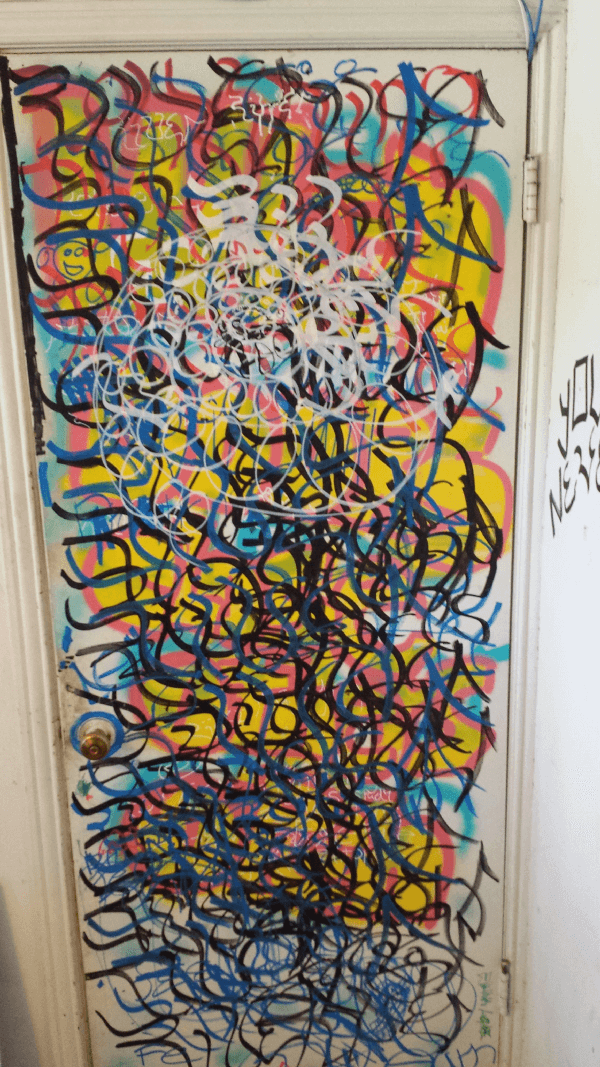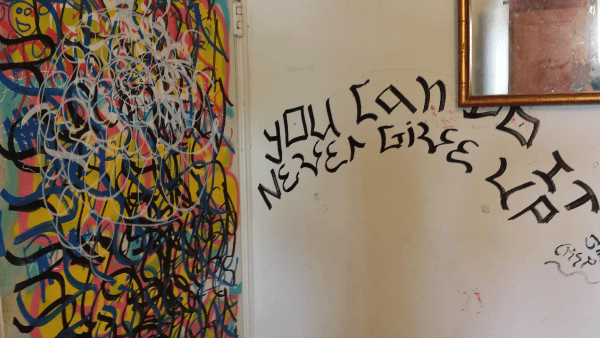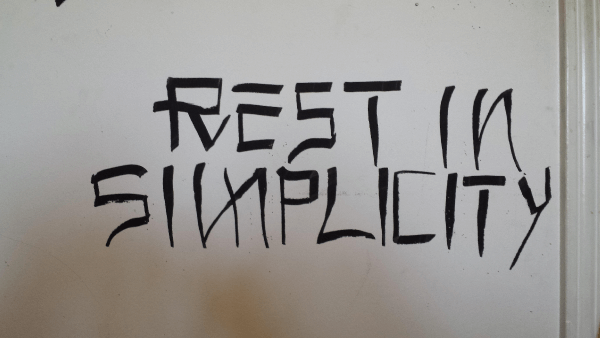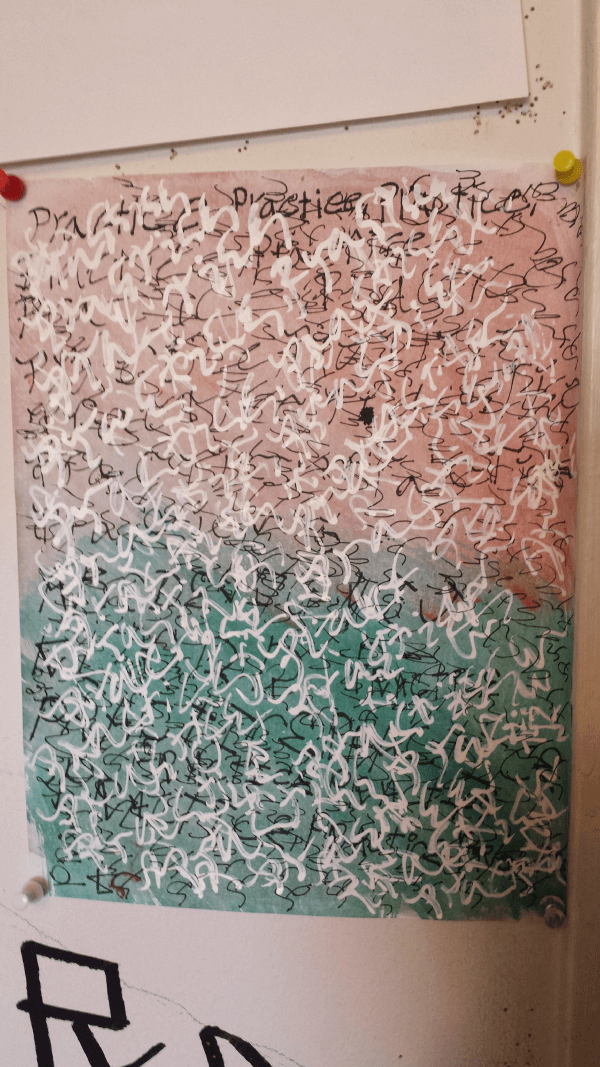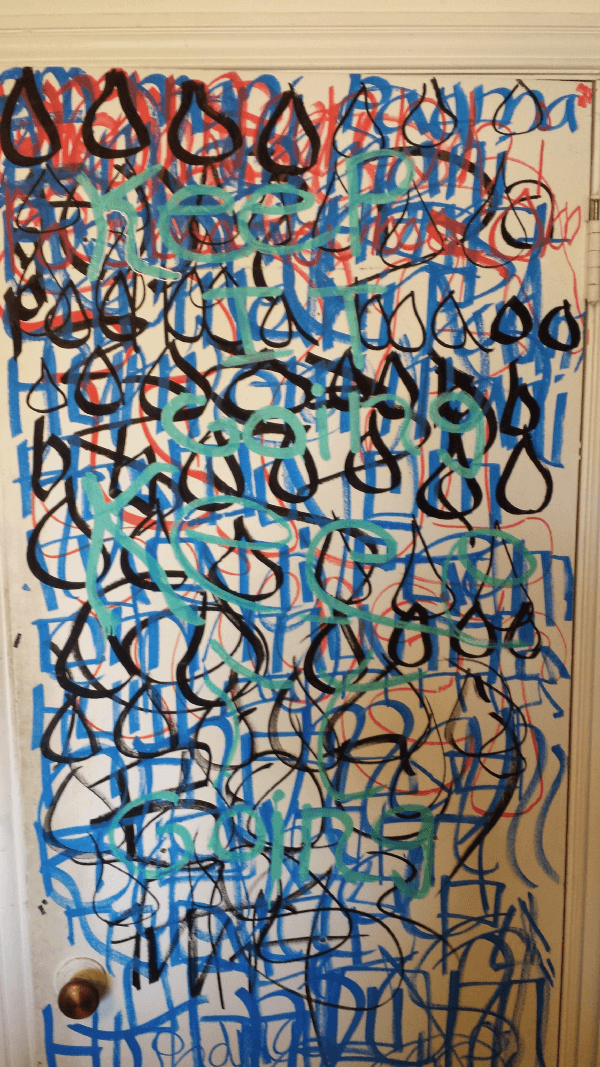Lili and I recently visited the home of our friend Q for an art-making, long-walk-taking afternoon. When we arrived, we discovered that Q (who prefers to remain anonymous) has been covering his room with a growing collection of calligraphic graffiti. I took a few quick photos, which give an idea of what it looks like.
Turning one’s space into an evolving work of art is fun. It can also stimulate a lot of growth, and helps build feelings of ownership and engagement. This can be especially important for people who typically feel invalidated, powerless, or dissociated.
We can apply this concept in many settings: schools, public spaces, homes, offices, prisons, and more. The key is that the people that actually live or work in a particular place are encouraged to alter the space in their own way, on an ongoing basis. If direct alteration isn’t allowed, covering surfaces with paper, wood, canvas, or dry-erase/chalk board can work as well.
Changes don’t have to be all-encompassing. Even small, well-marked areas designated for open alteration can make a big difference. In fact, it’s pretty easy to implement in a way that will work almost anywhere. In my experience, the hardest part is to get ourselves (and others) to relinquish a little bit of our perceived environmental control… which I think is a worthy endeavor and reward in itself.
